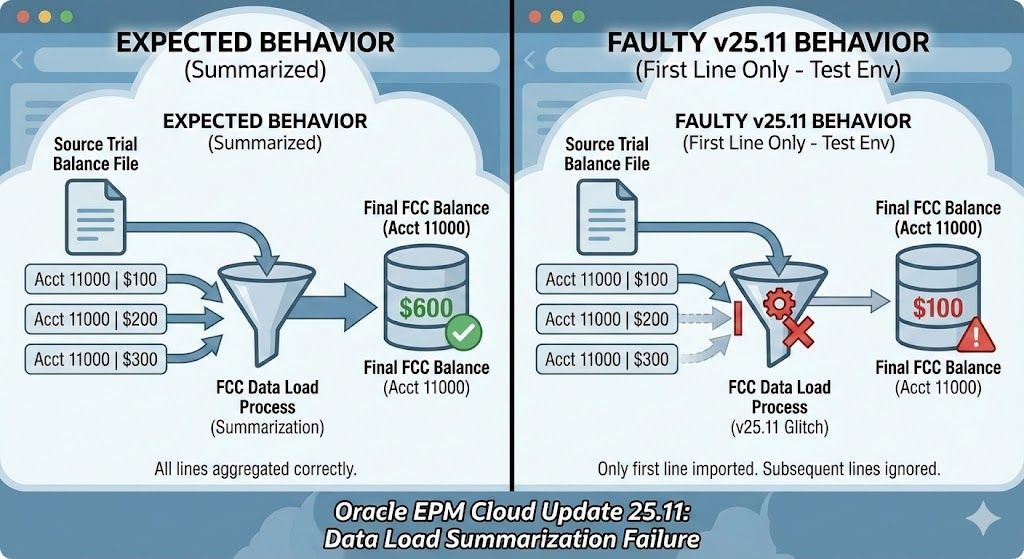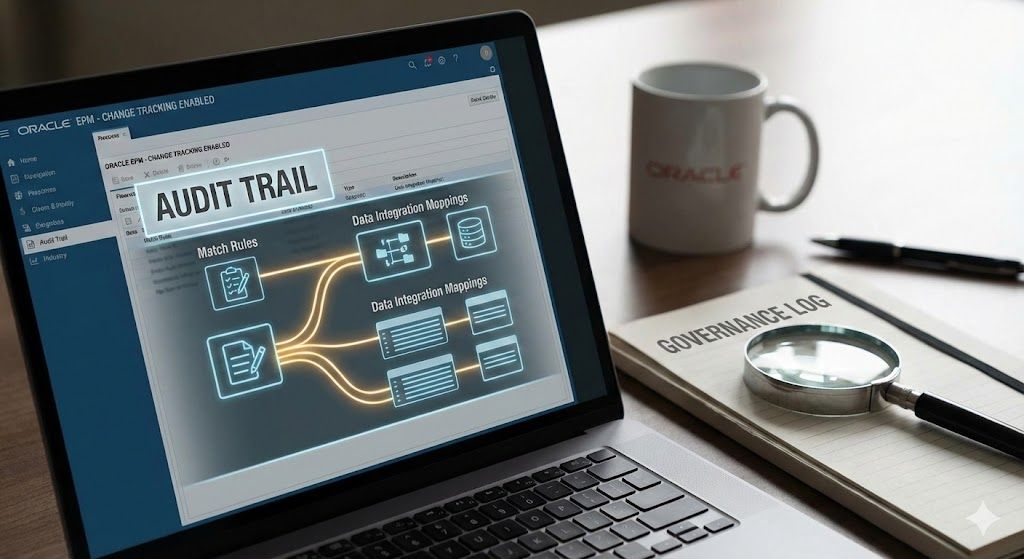Oracle EDM: Centralized User Management for Enhanced Data Governance
Nadia Lodroman • 29 July 2025
Listen to Tresora and Ledgeron's chatting about this blog post:
A Strategic Comparison of Data-Centric User Management in EDM and Foundational Access Control in Oracle MyServices
Oracle Enterprise Data Management (EDM) offers a robust and centralized platform for managing a common set of users and their access to data nodes across various business applications. This approach provides significant advantages in data governance, consistency, and operational efficiency when compared to the broader, more generalised user management capabilities of Oracle MyServices.
Managing Users and Permissions in Oracle EDM
Oracle EDM's user management is intrinsically linked to its core function: governing and harmonising enterprise data, such as master data, reference data, and hierarchies. The platform allows for the creation and maintenance of a single, reliable source of truth for this data, which is then consumed by other applications.
The user management within EDM is designed to support this data governance framework. It operates on a principle of permission-based access, where users and groups are granted specific rights to data objects within the EDM ecosystem. These objects include:
- Applications: Representing the various business systems (e.g., ERP, EPM) that either supply or consume data.
- Dimensions: These are the specific data structures being managed, such as charts of accounts, department hierarchies, or product catalogs.
- Nodes: The individual items within a dimension, like a specific department or account.
- Properties: The attributes associated with a node, such as its name, description, or active status.
Permissions in EDM are granular, allowing administrators to define precisely who can view, edit, approve, or commit changes to specific data elements. This ensures that only authorised individuals can modify critical enterprise information, maintaining data integrity. Users are typically managed in groups, and these groups are then assigned to specific roles and granted permissions to data objects. This model simplifies administration and ensures that access rights are consistently applied.
The process often involves:
- Defining Users and Groups: Users and groups are typically managed within the underlying Oracle Identity and Access Management (IAM) service.
- Registering Applications: Connecting the source and target applications to EDM
Assigning Permissions: Granting specific users or groups permissions to interact with the data within those registered applications, dimensions, and even down to the node level.
This tight integration between user permissions and the data itself is a key differentiator. It allows for a business-centric approach to access control, where user rights are directly tied to their responsibilities in the data management lifecycle.
Oracle EDM vs. Oracle MyServices: A Tale of Two User Management Philosophies
While both Oracle EDM and Oracle MyServices involve user management, their focus and scope are fundamentally different.
Oracle MyServices
(and its modern successor, the Oracle Cloud Console) is primarily concerned with Identity and Access Management (IAM) at a foundational level. It is where you create cloud accounts, define users, and assign them roles that grant access to entire Oracle Cloud services, such as a database, a virtual machine, or the EDM service itself. The permissions are broad and control "who can access what service."
In contrast, Oracle EDM
focuses on application-level and data-level security. Once a user is granted access to the EDM service via MyServices, EDM's internal security model takes over to define what they can do with the data within the service. It answers the question, "Now that you're in EDM, what specific data can you see and change?"
The Benefits of Managing Users in Oracle EDM
Leveraging Oracle EDM for managing user access to enterprise data offers several key benefits over a more generalized approach:
Enhanced Data Governance and Auditing: By centralizing user permissions around the data itself, organizations can establish clear ownership and accountability. EDM provides a complete audit trail of all changes, including who made the change, when it was made, and who approved it. This is crucial for regulatory compliance and internal controls.
- Improved Data Quality and Consistency: With granular control over who can modify data, the risk of unauthorized or incorrect changes is significantly reduced. This ensures that the data being shared with other applications is accurate and consistent, leading to more reliable reporting and analytics.
- Increased Business Agility: EDM's user-friendly interface empowers business users to manage their own data within a controlled framework. This self-service capability, combined with automated validation and approval workflows, accelerates the process of updating enterprise data, allowing the organization to respond more quickly to business changes.
Centralised and Simplified Administration: Managing user access to enterprise data across multiple applications from a single, centralised platform simplifies administration and reduces the potential for inconsistencies in permissions. This leads to greater operational efficiency and a lower total cost of ownership.
In essence, while Oracle MyServices provides the key to the building, Oracle EDM manages the access cards to the individual rooms and the specific files within them. For organisations seeking to establish robust governance over their critical enterprise data, the specialised user management capabilities of Oracle EDM are indispensable.
Take the Next Step in Mastering Your Data Governance
Understanding the right approach to user management is a critical step in building a robust data governance framework. If you are looking to optimise your Oracle environment and ensure the integrity and security of your enterprise data, expert guidance can make all the difference.
For a personalised consultation and to explore how these principles can be applied to your specific business challenges, contact Nadia Lodroman today at www.lodroman.com.






